 |
 |
 |
| |
Fine Differences Among Five Anal Cancer Screening Strategies in HIV Group
|
| |
| |
AIDS 2024, July 22-26, 2024, Munich
Mark Mascolini
Five anal cancer screening strategies proposed in 2024 by the International Anal Neoplasia Society proved largely similar in sensitivity, specificity, and other screening outcomes in 1620 people with HIV in a New York City cohort [1]. High-risk HPV (hrHPV) testing alone had the highest sensitivity and also yielded the highest number and percentage of high-resolution anoscopy (HRA) referrals.
People with HIV shoulder the highest burden of new HPV-associated anal cancers, Michael Gaisa and colleagues at the Icahn School of Medicine at Mount Sinai and other centers reminded AIDS 2024 attendees. Recently the International Anal Neoplasia Society released new guidelines on anal cancer screening for high-resource settings, including five strategies: anal cytology alone, hrHPV testing alone, cytology with hrHPV triage, hrHPV testing with cytology triage, or cotesting. (Triage means one test after the other.)
The Mount Sinai cohort included 1620 people with HIV who had anal cytology, hrHPV testing, and HRA-guided biopsy at this New York City hospital from 2012 through 2019. Thus this single-center study group does not include the most recent members of this HIV population, and a large majority (90%) were men who have sex with men. The investigators used biopsy-proved high-grade squamous intraepithelial lesion (HSIL) as an endpoint to calculate sensitivity, specificity, positive predictive value, negative predictive value, and the number of HRA referrals triggered by each screening strategy. Four in 10 cohort members (42%) had HSIL. (Sensitivity is a test's ability to designate an individual with disease as positive. Specificity is the ability to designate an individual who does not have a disease as negative [3].)
Overall, the five screening strategies performed similarly. For example, sensitivity ranged from 96% (hrHPV alone) to 85% (cytology with hrHPV triage or hrHPV with cytology triage) and negative predictive value from 92% (hrHPV alone) to 77% (cytology alone). While hrHPV testing alone had the highest sensitivity (96%), hrHPV with cytology triage had the highest specificity (48%), followed closely by cytology with hrHPV triage (47%). The highest positive predictive value came with hrHPV with cytology triage or cytology with hrHPV triage (54%), whereas hrHPV alone had the best negative predictive value (92%). hrHPV alone resulted in the highest proportion of HRA referrals (83%), while hrHPV with cytology triage yielded the lowest proportion of HRA referrals (66%) and cytology with hrHPV triage yielded a similar proportion (67%).
The researchers underlined the finding that using hrHPV and cytology triage (or cytology with hrHPV triage) increased specificity and cut number of HRA referrals most, an advantage since HRA use is limited by the low numbers of professionals trained to use the procedure.
References
1. Liu Y, Deshmukh A,, Sigel K, Gaisa M. The effectiveness of different anal cancer screening strategies for people living with HIV/AIDS. AIDS 2024, July 22-26, 2024, Munich. Abstract OAB0102.
2. Stier EA, Clarke MA, Deshmukh AA, et al. International Anal Neoplasia Society's consensus guidelines for anal cancer screening. Int J Cancer. 2024;10:1694-1702. doi: 10.1002/ijc.34850. https://pubmed.ncbi.nlm.nih.gov/38297406
3. New York State Department of Health. Disease screening-Statistics teaching tools. https://www.health.ny.gov/diseases/chronic/discreen.htm
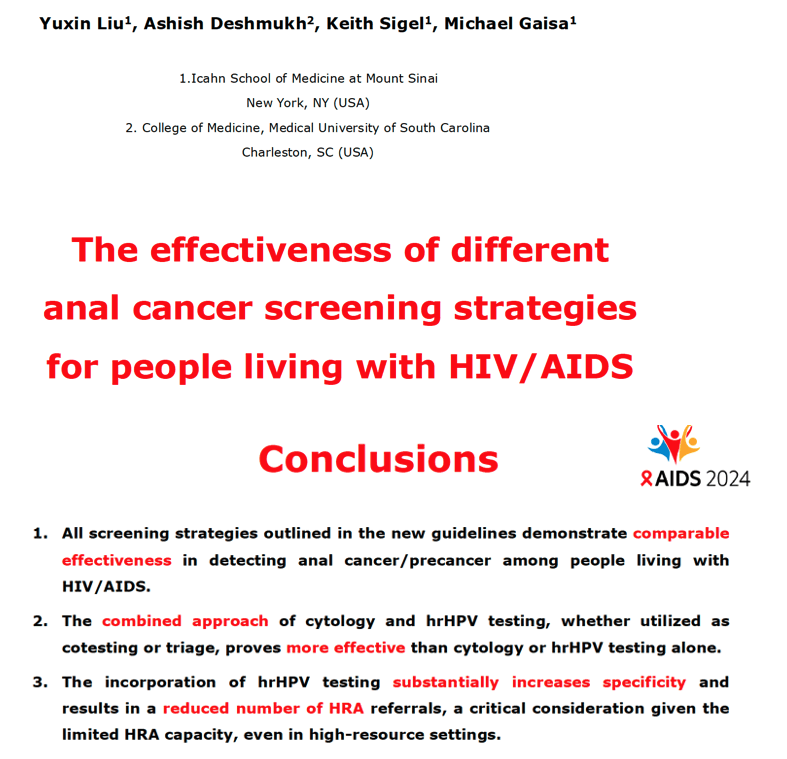
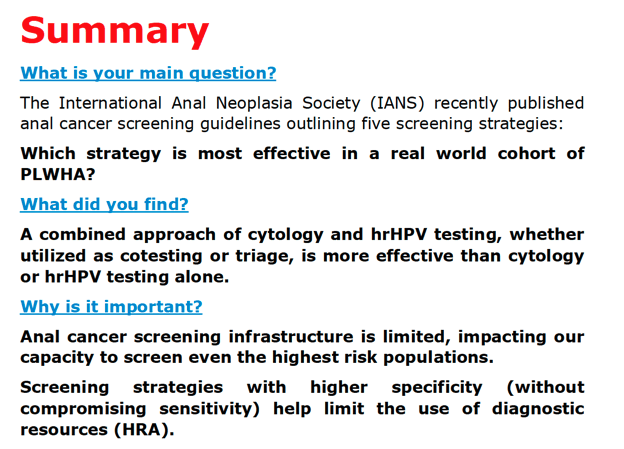
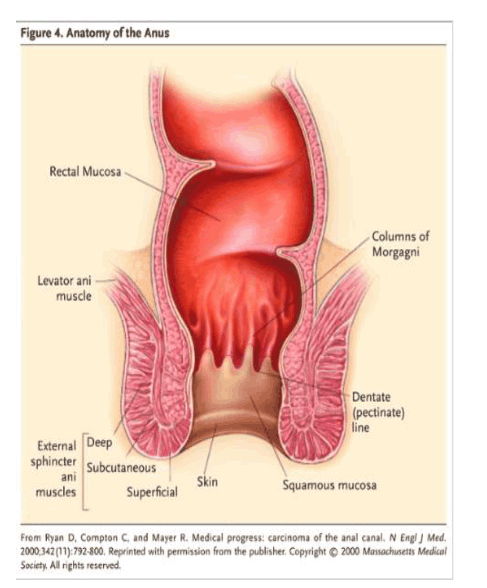
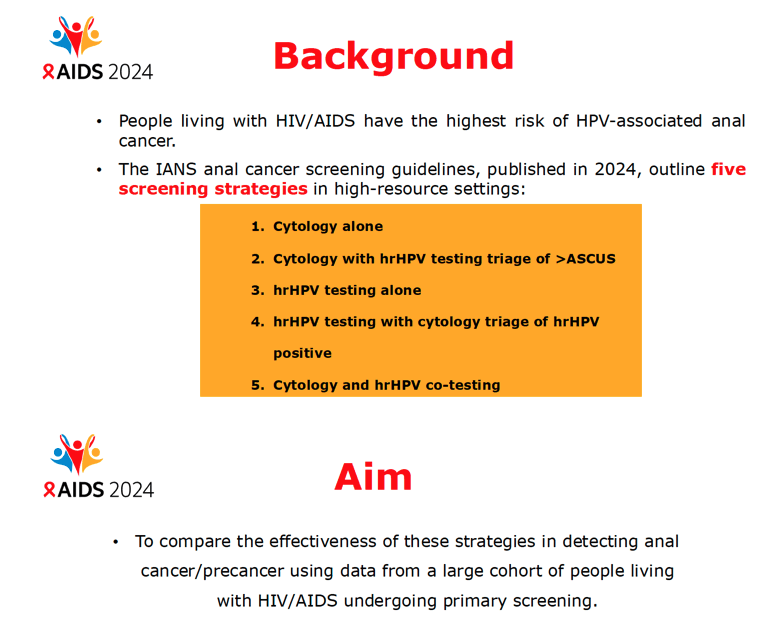
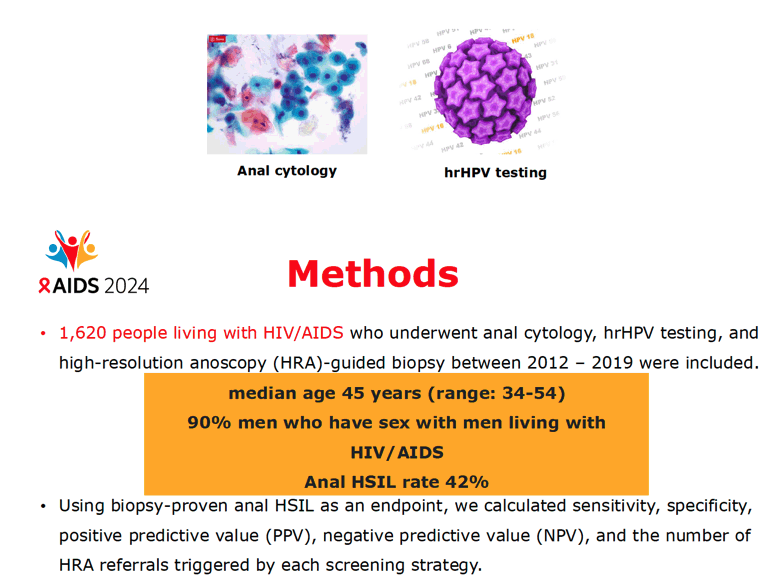
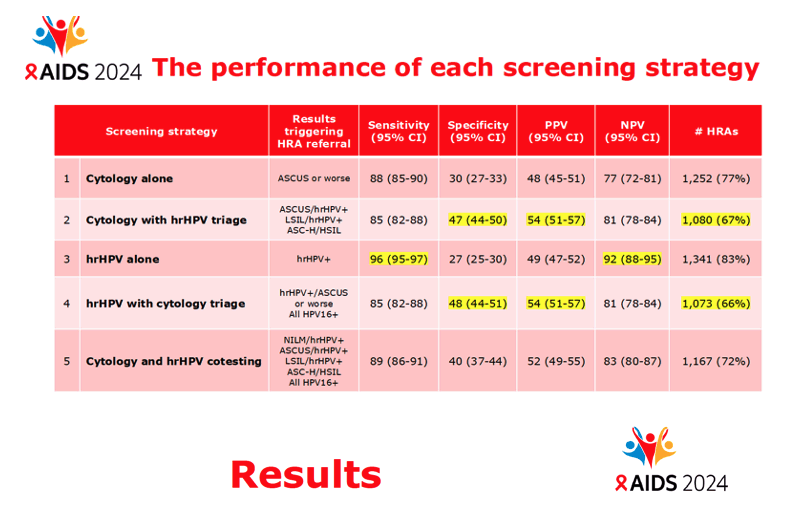
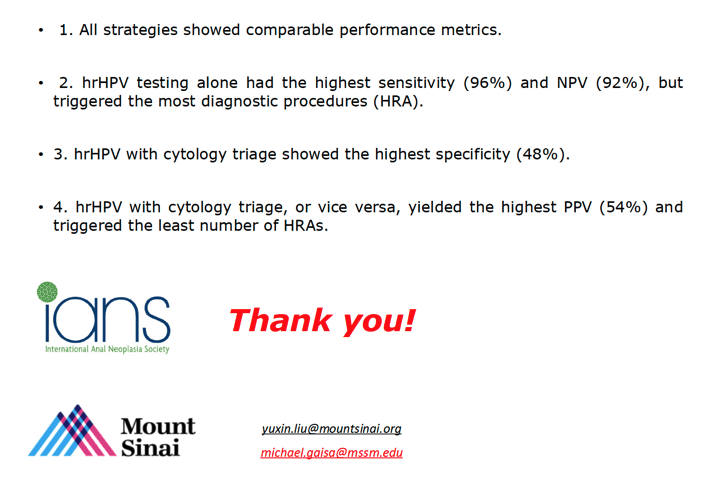
|
| |
|
 |
 |
|
|